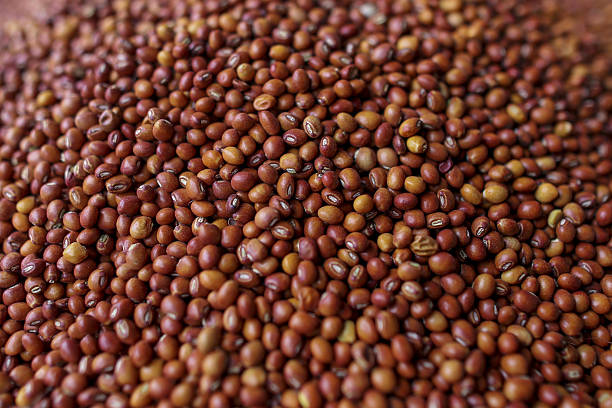
Pigeon pea is an affordable and locally available legume that has been shown to contain 20-22% protein, 65% carbohydrates, and a significant amount of fibre and minerals. It’s constituents makes it a valuable food source, especially in low-income, food-insecure regions. In Nigeria, for example, pigeon pea has been grown for centuries and is a staple in many households, offering a sustainable source of plant-based protein.
However, despite its advantages, pigeon pea suffers from several setbacks that have limited its wider acceptance. Some of these setbacks includes the presence of hard seed coat which makes it difficult to cookand the legume’s high oligosaccharide content, which often causes flatulence, discouraging its use in food products. Furthermore, when pigeon pea is compared to legumes like chickpeas or soybeans, it is often regarded as inferior. This perception is further elaborated on in commercial food industries, where pigeon pea starch is rarely used despite its high carbohydrate content.
Another explanation is the long established reliance on traditional sources of starch, such as corn, potato, and cassava, which have long dominated global markets. These starches are produced at scale, and the existing infrastructure used in their production makes them easy to source and use. In comparison with pigeon pea, despite being a hardy and nutritious crop, it is primarily cultivated by smallholder farmers in rural communities. Hence, the lack of commercial interest and investment in pigeon pea has led to its continued underutilization.

Moreover, the legume’s association with poverty in many regions further maintains its marginalization. It is often regarded as “food for the poor”.Pigeon pea receives little research attention and it is seen as less marketable compared to other legumes.
The growing demand for plant-based ingredients in the food industry as researched in the findings from the study titled “Physicochemical Properties Of Native And Acetylated Pigeon Pea Starches” published in the IOSR Journal of Environmental Science, Toxicology and Food Technology by Osho D. O. (2024) calls for a re-evaluation of pigeon pea starch. The chemical modification techniques used in the study could open up new avenues for its use in a wide range of products, from baked goods to processed meats and plant-based alternatives.
The findings of the study raise important questions about why pigeon pea remains underused and how its starch could be chemically modified to unlock new commercial possibilities.This will definitely create more awareness to the leguminous community to make Pigeon pea more relevant and place in its proper value.
The journal article presents ground breaking research on the acetylation of pigeon pea starch and this is a chemical modification process that dramatically improves its functionality. Acetylation is achieved by treating starch with acetic anhydride and this enhances several of its key properties, including water and oil absorption capacities, dispersibility, solubility, and swelling power. These modifications transform pigeon pea starch into a more multifaceted and industrially useful ingredient.
The study compared the results from the native starch with the acetylated starch and found that acetylated pigeon pea starch has a higher water absorption capacity (1.96 g/ml compared to 1.13 g/ml for native starch). This increased capacity for water retention makes the starch ideal for use in products where consistency and moisture are crucial, such as baked goods, noodles, and sauces. Similarly, the improved oil absorption capacity of the acetylated starch means that it could be used in food systems where oil retention is important, such as in processed snacks and pastries.
Additionally, the acetylation process was shown to increase the dispersibility of pigeon pea starch (98.5% compared to 87.5% for native starch), and this makes it easier to incorporate into liquid formulations. This property could make pigeon pea starch a competitive thickening agent in products like soups, custards, and yogurts.
One of the most important modifications achieved through acetylation is the reduction in retrogradation, which has long been a limiting factor for legume starches. For example food like bread and rice becomes hard overtime due to retrogradation of its starch. However, with the reduced retrogradation, acetylated pigeon pea starch becomes a more stable thickener and gelling agent, particularly in applications that require prolonged shelf stability.
As the food industry continues to explore alternative ingredients that meet the demand for plant-based, sustainable, and functional food products, pigeon pea starch should no longer be overlooked. The chemical modifications outlined in the study show that pigeon pea starch, particularly in its acetylated form, has the potential to compete with more widely used starches in both food and industrial applications.This evidence should be enough to call for a total change in the existing perception of Pigeon Pea.
In no distant time, further research and investment in pigeon pea could emerge as a key ingredient in the future of food production. By adopting modified pigeon pea starch, industries are not only limited to the expansion of the use of an underutilized legume but also contribute to more sustainable and resilient food systems.
Osho Dorcas Odunayo is a graduate of Federal University of Technology Akure where she bagged her first degree in Food science and Technology. She proceeded to pursue a second degree in Czech University of Life Sciences in the department of Agri Food system and Rural Development. After her Studies she has been into several research works in the past years, publishing and writing on various articles related to Food.






